When I do modern aircraft, most of the weathering is done with paint...from the get-go.
I'll start with all black, then "marble on some white...like so...
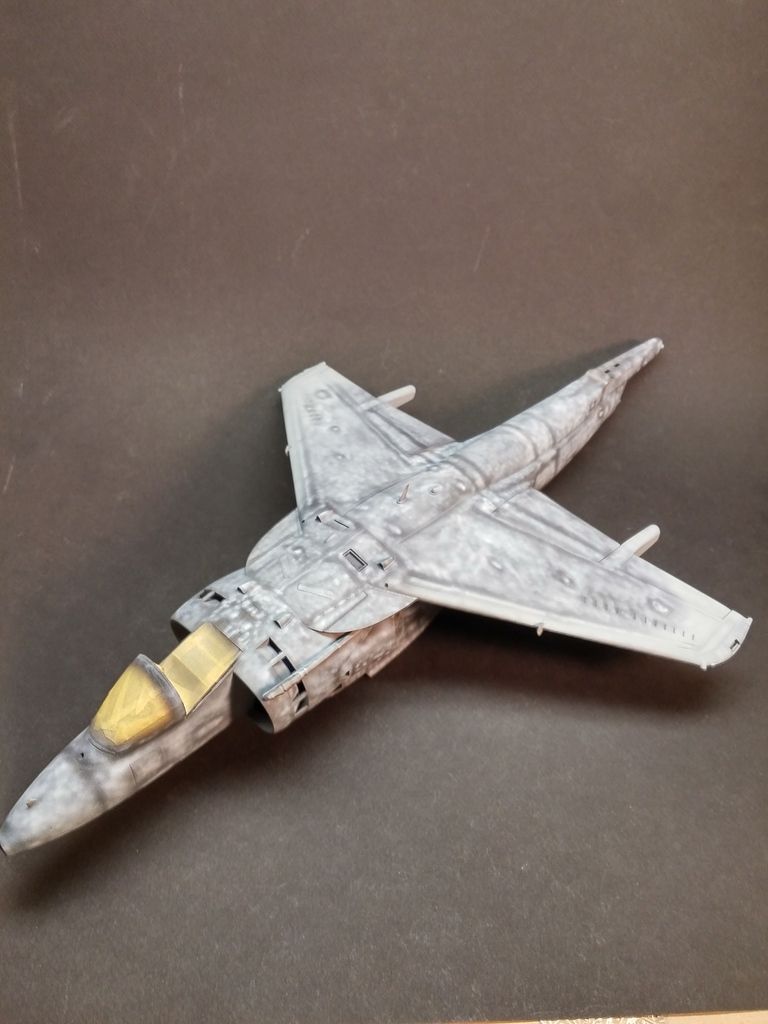
Then, airbrush your color coats...I thin them way down, maybe 65/35(thinner/paint) and build up the color slowly, leaving just a wee bit of the black/white showing. There's a decent sized "window" between nopt enough color and too much color. Having it thinned down allows so slow build up, so it's difficult to put down too much.
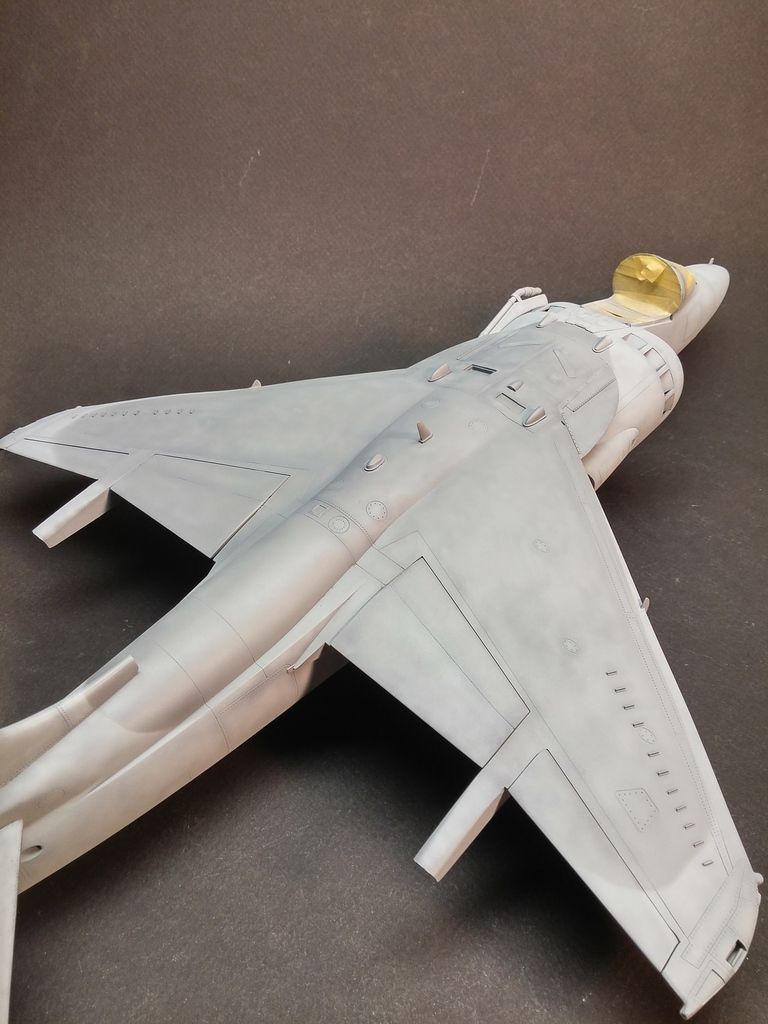
At this point, I gloss, decal, gloss again to seal in the decals, then do the wash.
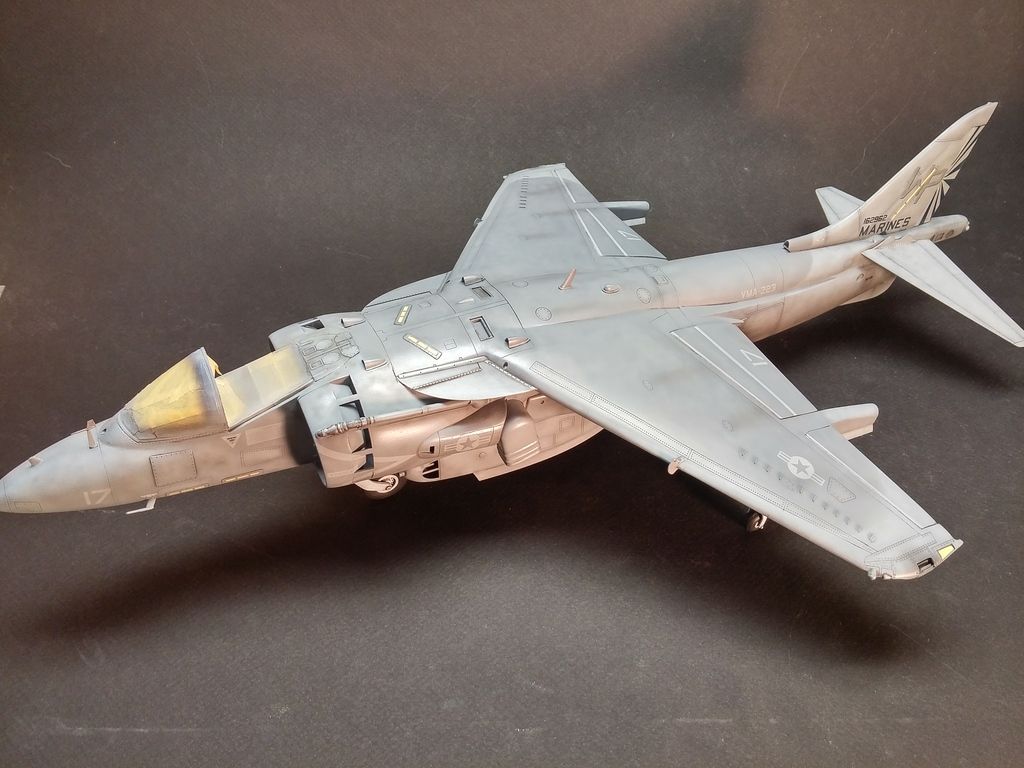
Now, we're up to the point that you are at. There's a few things that can be done. If you want a bit of tonal variation to the paint(kinda like I have), you can add just a drop of grey (lighter than what the plane is now) to the paint cup that's half filled with dull coat. There will be very little color building up, and you can "marble" a bit with that. You can also go right over the decals to tone them down a bit. (test on some scrap!) In addition to that, pastel chalks are good for dirtying things up around access panels and traffic areas, as well as making streaks and grime.
You can see some pastel chalk grime and streaks on top of the wings...
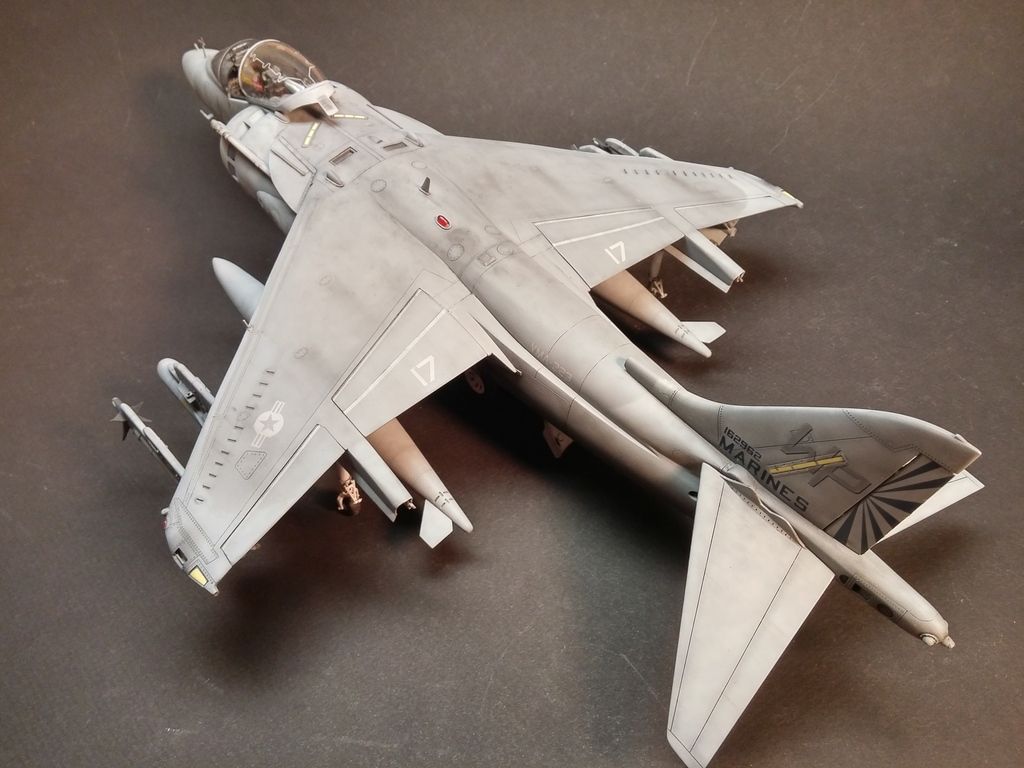
Pastel chalk again for streak on bottom of wings as well as exhaust. The exhaust staining was first done by adding a drop of dark brown to half a cup of dull coat(as mentioned earlier), sprayed a little, then added a drop of black, sprayed a little more...then pastel chalk to finish it up.
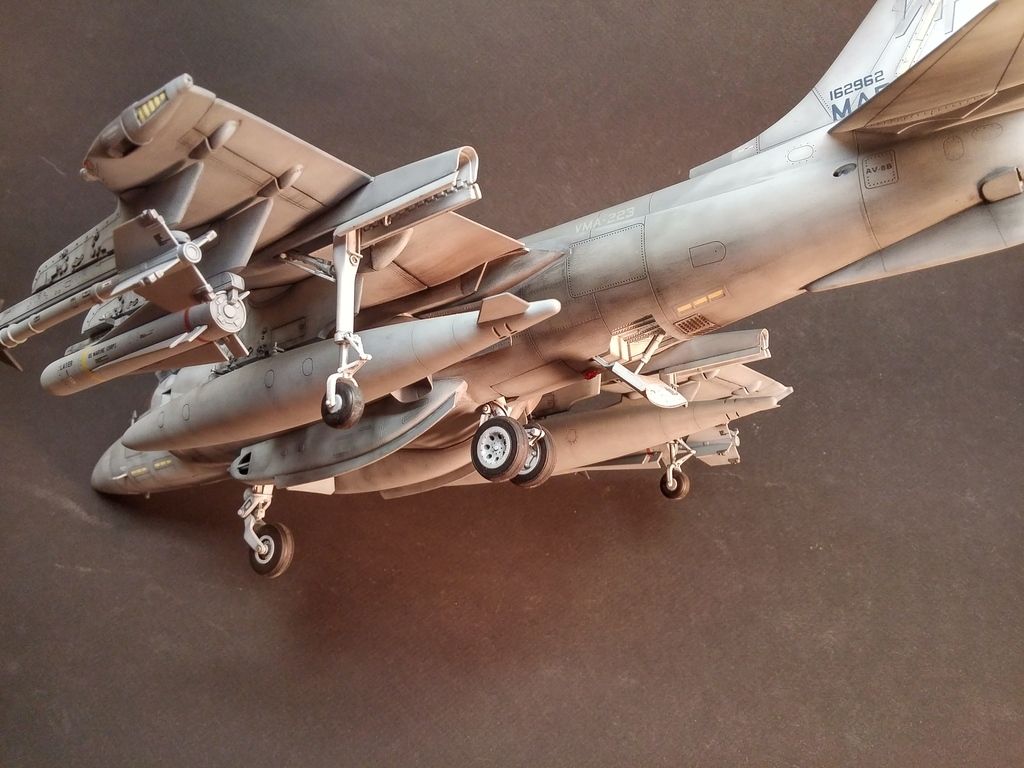
So...a basic recap...add a little color to the dull coat, spray it (practice a little on a "test bed" to see what it does...you may want to add a little more paint...little less...whatever). Then go with some pastel chalks.
Most of the F-15's I've seen (speaking of the E's, in the darker "gunship grey") seem quite clean...no where near as fun! The belly though...that area can get pretty grimey and streaky, especially under where the engines are.